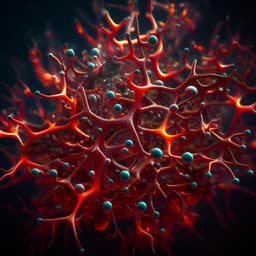Introduction
The detection and amplification of biological signals are crucial for bioelectronic devices. Organic mixed ionic-electronic conductors (OMIECs) are promising materials because of their ability to couple electronic and ionic currents and their processability. Organic Electrochemical Transistors (OECTs), utilizing OMIECs, are commonly used for amplifying biological signals. CMOS-like circuit architectures, requiring both p-type and n-type OECTs, are essential for signal processing. However, most OMIECs are p-type, limiting the development of complex circuits. Ambipolar OECTs, capable of acting as both p-type and n-type, simplify circuit fabrication, reduce costs, and enhance device density. In bioelectronics, ambipolar OECTs offer the significant advantage of detecting both cations and anions. While some progress has been made in developing ambipolar OMIECs through material design and synthesis, creating high-performing and stable devices remains challenging. This research explores a new strategy inspired by organic photovoltaics (OPVs) and OFETs: blending p- and n-type materials to create ambipolar OECTs, offering versatility in material selection and morphology control without synthesizing new materials.
Literature Review
The literature review highlights the challenges in creating high-performance ambipolar OMIECs. Most OMIECs are p-type, and developing n-type materials involves complex synthesis and intricate materials design. Existing ambipolar OECTs often show poor performance or stability. The authors discuss previous approaches to achieving ambipolarity, such as modification of side chains or control of dihedral angles, but note their limitations. The scarcity of high-performing, stable ambipolar OMIECs is emphasized, setting the stage for the proposed blend-based approach.
Methodology
The study uses a blend of p-type poly(2-(3,3'-bis(2-(2-(2-methoxyethoxy)ethoxy)ethoxy)-[2,2'-bithiophen]-5-yl)thieno[3,2-b]thiophene) (p(g2T-TT)) and n-type C60,N,N,N-trimethyl-1-(2,3,4-tris(2-(2-methoxyethoxy)ethoxy)phenyl)methanaminium monoadduct (PrC60MA). OECTs were fabricated with varying blend compositions. The authors carefully controlled blend composition, processing conditions, and thermal treatments to optimize morphology for ambipolar transport. Characterizations included output and transfer curves, stability tests over multiple cycles, spectroelectrochemistry (SEC), cyclic voltammetry (CV), electrochemical quartz crystal microbalance (EQCM), grazing incidence wide angle X-ray scattering (GIWAXS), and high-resolution scanning electron microscopy (HRSEM) with vapor phase infiltration (VPI) for morphology analysis. Inverter circuits were constructed using two identical ambipolar OECTs. The methodology involved detailed material synthesis (the p-type polymer was synthesized by the McCulloch group), film preparation techniques (spin coating and annealing), electrochemical and optical characterization, microstructural analysis, and circuit fabrication and testing.
Key Findings
The researchers successfully fabricated ambipolar OECTs with a 95:5 w/w blend ratio of PrC60MA:p(g2T-TT). These devices exhibited balanced p- and n-type characteristics with similar figures of merit (µC*) for both polarities. The ambipolar OECTs showed high transconductance (gm) and excellent stability over 100 alternating polarity cycles, with ON/OFF ratios exceeding 10³. The inverters, constructed from two identical ambipolar OECTs, demonstrated high current and voltage amplification factors and stability over 20 cycles. Spectroelectrochemistry and cyclic voltammetry confirmed the independent doping of both p- and n-type components in the blend. EQCM measurements demonstrated mass changes corresponding to both anion and cation injection/extraction, verifying ambipolar ionic transport. GIWAXS and HRSEM with VPI revealed a bulk-heterojunction-like morphology with an interpenetrating network. The p-type transient response time was slower than the n-type due to the low polymer content, correlating with the slightly higher hysteresis observed in p-type operation. While the µC* values are impressive, further optimization is needed to reach state-of-the-art performance.
Discussion
The successful demonstration of ambipolar OECTs using a blend of p- and n-type materials provides a simple and versatile alternative to synthesizing novel ambipolar OMIECs. The independent tunability of each component offers significant advantages for optimization. The bulk-heterojunction morphology enhances film stability and device performance. The findings address the challenge of creating high-performing ambipolar OECTs by providing a straightforward fabrication method. The results suggest that judicious selection of blend components, considering morphology, performance balance, and threshold voltage symmetry, is crucial for successful ambipolar device fabrication. This approach opens avenues for developing advanced bioelectronic devices and biosensors with dual cation/anion detection capabilities.
Conclusion
This study successfully demonstrates a new paradigm for fabricating high-performing and stable ambipolar OECTs and inverters using a simple blend-based approach. The independent tunability of the p- and n-type components offers significant advantages for optimizing device characteristics. This approach simplifies fabrication and opens new possibilities for developing advanced bioelectronic devices and dual-ion sensing applications. Future research could explore further optimization of blend composition, processing parameters, and material combinations to improve device performance and expand the range of bioelectronic applications.
Limitations
The study focuses on a specific blend ratio and material combination. While the performance is good, further investigation is needed to explore the performance across a broader range of blend ratios and material selections. The response time of the p-type channel is slower than the n-type channel, which may be a limitation for certain applications. Although the achieved performance is better than many previously reported ambipolar OECTs, it still has room for improvement before approaching the state-of-the-art in unipolar devices. The somewhat higher hysteresis in the p-type operation may also need further attention for high-precision applications.
Related Publications
Explore these studies to deepen your understanding of the subject.






